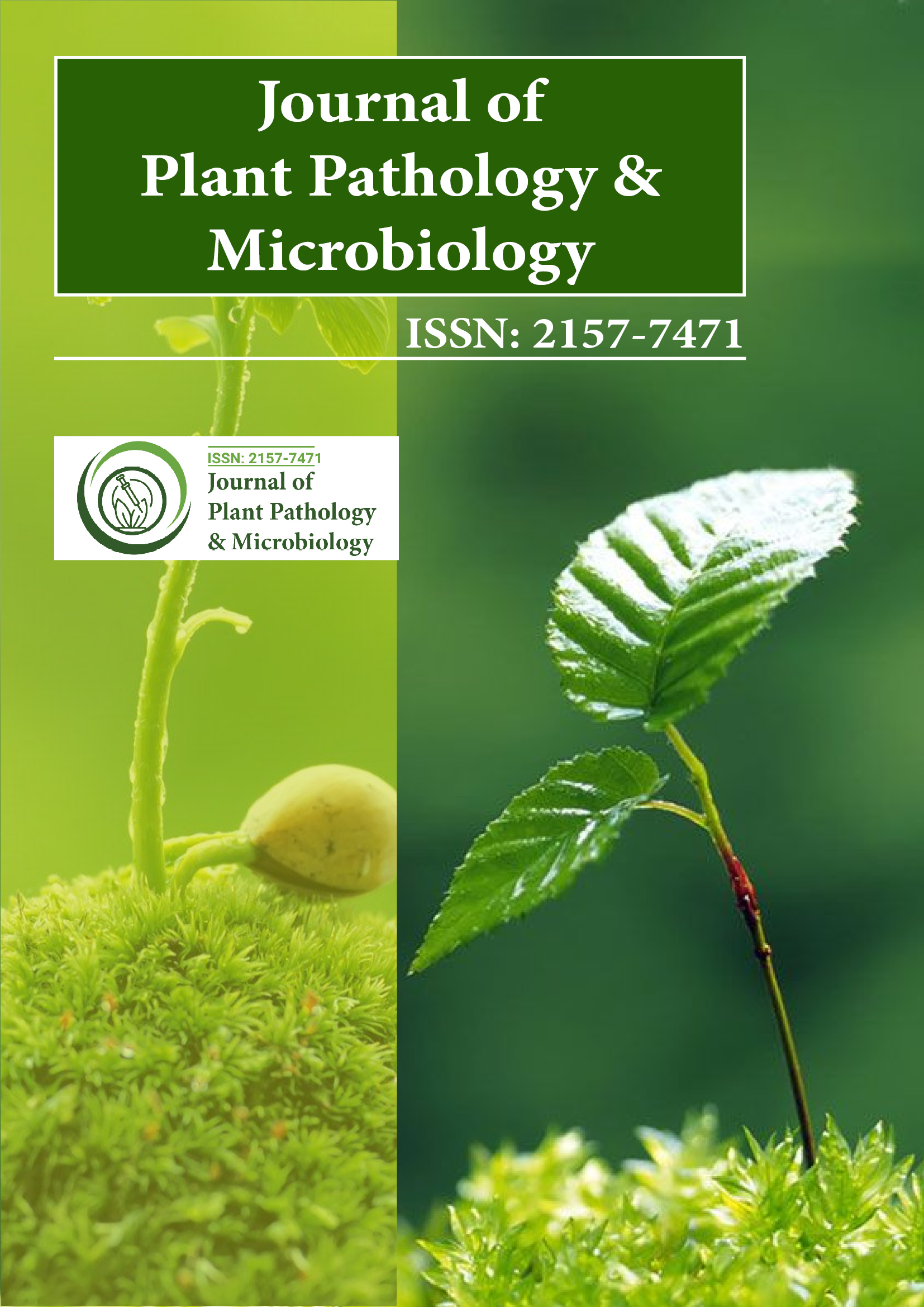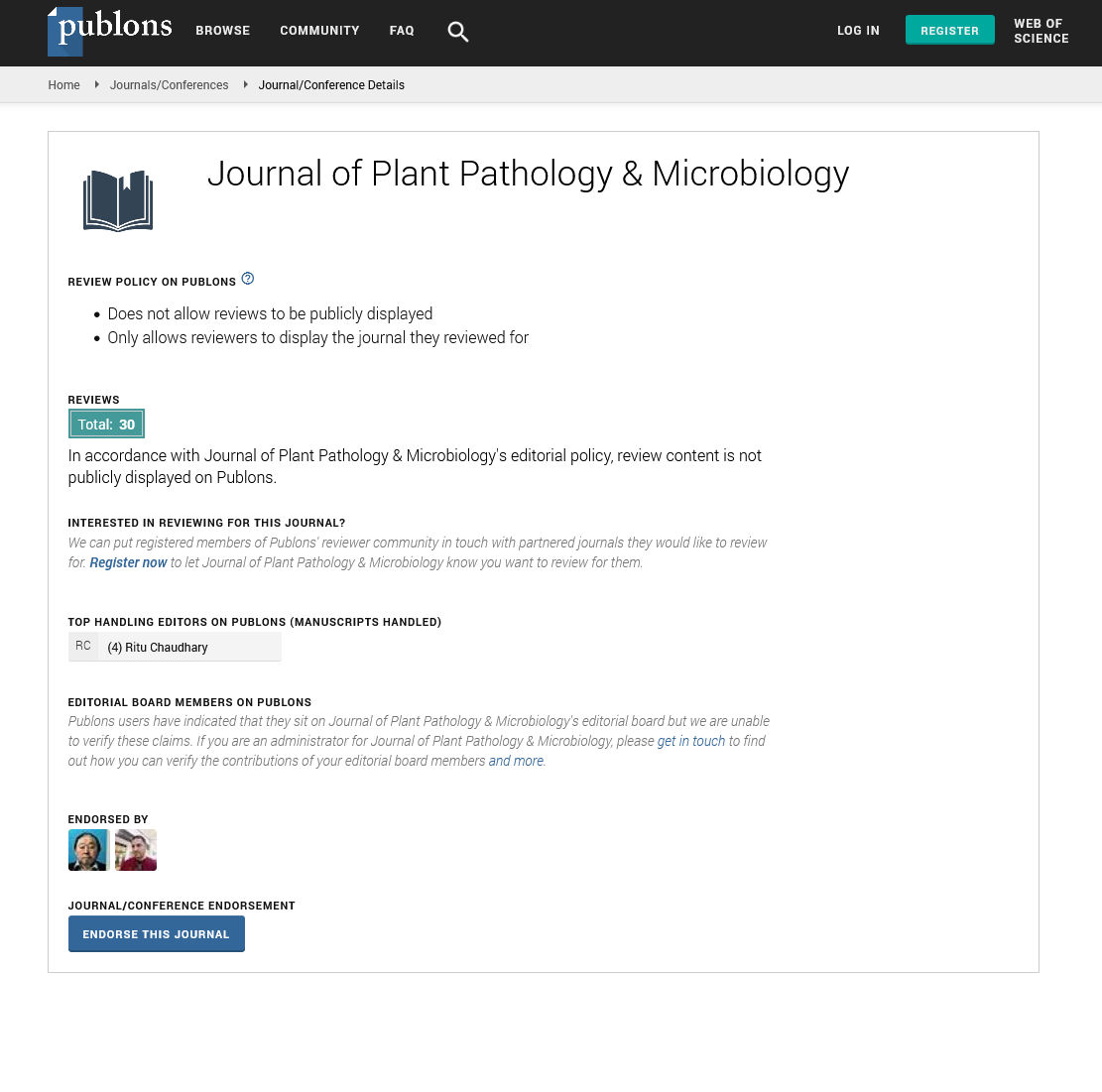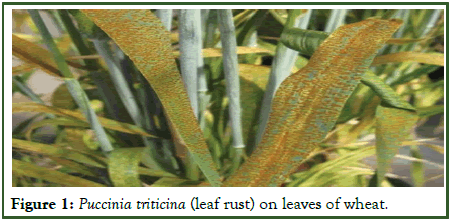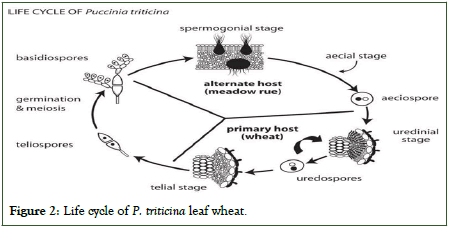Indexed In
- Open J Gate
- Genamics JournalSeek
- Academic Keys
- JournalTOCs
- CiteFactor
- Ulrich's Periodicals Directory
- Access to Global Online Research in Agriculture (AGORA)
- Electronic Journals Library
- Centre for Agriculture and Biosciences International (CABI)
- RefSeek
- Directory of Research Journal Indexing (DRJI)
- Hamdard University
- EBSCO A-Z
- OCLC- WorldCat
- Scholarsteer
- SWB online catalog
- Virtual Library of Biology (vifabio)
- Publons
- Geneva Foundation for Medical Education and Research
- Euro Pub
- Google Scholar
Useful Links
Share This Page
Journal Flyer

Open Access Journals
- Agri and Aquaculture
- Biochemistry
- Bioinformatics & Systems Biology
- Business & Management
- Chemistry
- Clinical Sciences
- Engineering
- Food & Nutrition
- General Science
- Genetics & Molecular Biology
- Immunology & Microbiology
- Medical Sciences
- Neuroscience & Psychology
- Nursing & Health Care
- Pharmaceutical Sciences
Research Article - (2025) Volume 16, Issue 2
Review on Effects of Leaf-Rust Fungus on Wheat Plant and Its Management
Melkamu Genet*Received: 20-Mar-2024, Manuscript No. JPPM-24-25180; Editor assigned: 22-Mar-2024, Pre QC No. JPPM-24-25180 (PQ); Reviewed: 09-Apr-2024, QC No. JPPM-24-25180; Revised: 14-May-2025, Manuscript No. JPPM-24-25180 (R); Published: 21-May-2025, DOI: 10.35248/2157-7471.25.16.751
Abstract
Leaf rust, caused by Puccinia triticina, is a severe disease that poses a significant threat to wheat production worldwide, often resulting in substantial yield losses. It occurs more frequently and affects a broader range of regions compared to other wheat rust types. This review focuses on understanding the interaction between wheat and the leaf rust pathogen, the pathogen’s life cycle, its impacts on wheat growth and productivity, and management strategies. The pathogen thrives under moderate temperatures and high humidity, spreading through airborne spores. Its ability to rapidly evolve new races complicates management efforts. Severe infections can reduce grain weight and quality, impairing market value. Effective management requires integrating multiple approaches, including cultural practices, chemical controls, biological interventions, and genetic resistance. Cultural methods such as crop rotation and the use of resistant cultivars can limit pathogen spread. Chemical fungicides provide immediate control but may not be sustainable. Biological control using agents like Pseudomonas putida offers eco-friendly alternatives. However, genetic resistance remains the most effective and sustainable strategy, particularly in resource-constrained regions. This review emphasizes the need for a comprehensive approach, combining genetic resistance with other strategies, to mitigate the economic and agricultural impact of wheat leaf rust.
Keywords
Leaf rust; Pathogen; Puccinia triticina; Management strategies
Introduction
Wheat (Triticum aestivum L.) is perhaps of the main staple yield on the planet. For a great many individuals all over the planet, it fills in as their essential wellspring of calories. Wheat is likewise one of the main staple food crops in Ethiopia and is filled in an assortment of agro-ecologies. In any case, wheat creation is exceptionally obliged by rusts that can cause huge the yield misfortune. The rust microbes are among the main microorganisms making a constant danger wheat creation [1].
Among the three sorts of wheat rusts (leaf rust, yellow rust and stem rust), leaf rust (Lr), brought about by Puccinia triticina Eriks, is the most widely recognized rust sickness of wheat. It happens all the more routinely and in additional overall locales than stem rust of wheat (P. graminis f. sp. tritici) or stripe rust of wheat (P. striiformis f. sp. tritici). It appears to be reasonable that the P. triticina focus of beginning is the Fruitful Bow area of the Center East, where the normal scope of the essential and elective hosts cross-over [2].
Leaf rust is a staggering illness that can profoundly undermine wheat creation and can cause huge yield misfortunes, especially in spots of the reality where wheat is developed and where the climate is ideal [3]. Ethiopia, wheat leaf rust, is one the main sicknesses in most wheat developing region of the nation, where the yield misfortune because of its effect is arriving at up to 75% in powerless wheat assortments at problem area regions [4].
As a result of their fast spread and the incessant development of new physiologic races, overseeing grain rust infections is convoluted and in this way requests ideal information on every one of the components of pestilences that are interrelated. Thusly, to oversee oat rusts in wheat creation, the blend of various techniques ought to be utilized. Essentially, wheat leaf rust sickness can be controlled utilizing a blend of various techniques like social, synthetic, natural and hereditary obstruction, however utilizing hereditary opposition is the best methodology. The goal of this research paper is to survey the wheat leaf-rust parasite cooperation, life patterns of microbe, impacts and its administration.
Literature Review
Wheat leaf- rust and its management
Wheat leaf- rust: The most well-known and broadly circulated of wheat rust infection is called leaf. The causal specialist of leaf rust is Puccinia triticina (Pt). It influences the leaf cutting edges, yet under ideal conditions, enormous inoculum densities, and especially powerless cultivars, it can likewise contaminate the leaf sheaths [5]. The microorganism is normal in places with moderate temperatures and wet circumstances. In extreme scourges with dampness stress, wilting of the grain happens. Early (pre-heading) pandemics can be annihilating uncommon genotypes, florets, turners, and plants. Wheat assortments that are completely vulnerable have huge uredinia without causing chlorosis or rot in the host tissues. As per Kolmer, safe wheat assortments are portrayed by different reactions from little overly sensitive specks excessively little to direct measure uredinia that might be encircled by chlorotic as well as necrotic zones side effects (Figure 1) [6].
Figure 1: Puccinia triticina(leaf rust) on leaves of wheat.
Since the growth is heteroecious, it needs a telial/uredinial have, regularly wheat, as well as a substitute (pycnial/aecial) have, for example, Thalictrum speciosissimum or Isopyrum fumaroides, to finish the whole life cycle [7].
Life cycle pathpogen: Wheat leaf rust spreads via airborne spores. Five types of spores are formed in the life cycle: Urediniospores, teliospores, and basidiospores develop on wheat plants and pycniospores and aeciospores develop on the alternate hosts (Figure 2). The germination process requires moisture, and works best at 100% humidity [8].
Figure 2: Life cycle of P. triticina leaf wheat.
Each 8 to 14 days, contingent upon the ongoing ecological conditions, the uredinial cycle is rehashed. The existence cycle is finished when aeciospores grow and enter stomata of the telial/ uredinial have, bringing about creation of abiogenetic urediniospores. The haustorium is shaped inside the living host cell in a viable host-microorganism communication. In a contradictory host-microorganism reaction, haustoria neglect to create or create at a slower rate. The parasite haustorium passes on when the host cell kicks the bucket. Contingent on when or the number of cells that are involved, the host-microbe connection brings about a noticeable opposition reaction [9].
Consequence of wheat leaf rust: The significant result of leaf rust scourges is loss of both quantitative and subjective grain yield. The leaf rust basically influences the leaf sharp edges of wheat, yet it can likewise influence the leaf sheath [10]. The leaf sheath of wheat can likewise be impacted by the leaf rust, which generally influences the leaf sharp edges. Because of the illness' capacity to bring down part weight and weakening quality, yield misfortune might result. More yield decline is welcomed on by contaminations on the banner leaf than by diseases in the lower covering. The sickness is persistent because of its season of appearance and drawn out season for its turn of events. Extreme contaminations cause withering of grains and adversely impact the physiology and biochemical attributes of wheat. Hindered grains weaken market worth and weight of grains.
Management of wheat leaf rust disease
Cultural practice: Social exercises can be utilized to control the sickness wheat leaf rust. The wellsprings of obstruction currently set up are extraordinarily improved by the utilization of various social practices. Thus, crop the executives as far as a blend of harvest decision, timing of cultivating and eliminating volunteer cereals might give compelling control of leaf rust. Suitable utilization of composts and plant development controllers, utilizing early developing cultivars, utilizing multi-lines or varietal blends, crop pivot additionally assists with restricting the hereditary variety of the microbe populace and to limit the quantity of urediospores created and gathered in the season.
Chemical control: Compound method for controlling wheat rusts significant as a second line of safeguard. The main part of fungicide application is tom safeguard the banner leaf from contamination until after the pieces have filled. With new and more powerful fungicides like picoxystrobin, fluoxastrobin, and pyraclostrobin synthetic compounds items is controls wheat leaf rust. Numerous fungicides have been assessed, checked, and enrolled for wheat sickness in Ethiopia, among them, slant, guard, progress, topazol, bayleton, forestall, orius, soprano, natura, amistar extra and rexduo are normally utilized for wheat leaf rusts.
Biological control: The bacterial strain Pseudomonas putida is equipped for delivering an assortment of siderophores, antitoxins, and an irrelevant measure of Hydrogen Cyanide (HCN), all of which repress Puccinia triticina development both in vitro and in vivo. Different bio-control specialists were considered in contrast to leaf rust of wheat with their consolidated impact and forlorn.
Genetic resistance: The best, cost-productive, earth mindful, and long haul technique for controlling leaf rust infection for limiting yield misfortunes is hereditary opposition. It is likewise the best methodology especially for asset unfortunate ranchers in the creating scene. It is named: Race-explicit and race vague obstruction. Race-explicit obstruction is otherwise called subjective, vertical, seedling, all-stage, monogenic (significant qualities), and overly sensitive opposition. Race-explicit opposition is welcomed on by a solitary obstruction quality. It is compelling against just specific races of a microbe and frequently "separates" effectively with the occurrence of new pathotypes of a pathogen, often led by a boom and bust cycle. It is effective at the seedling stage and remains effective at adult stage.
Race vague opposition is otherwise called quantitative, or even, grown-up plant, slow rusting, polygenic (minor quality), strong, and so on obstruction, with each contributing a fractional expansion in obstruction. Race vague opposition is communicated by numerous qualities or Quantitative Characteristic Loci (QTLs). It functions admirably at grown-up plant organizes and is regularly found to have field opposition. Thusly, wheat analysts have forever been focusing on grown-up plant obstruction qualities to distinguish and work fair and square of protections. Among the Lr qualities indexed, just 14 give race vague obstruction. These incorporate Lr12, Lr13, Lr22 (alleles a, and b), Lr34, Lr35, Lr37, Lr46, Lr48, Lr49, Lr67, Lr68, Lr75, and Lr77.
Conclusion
Wheat is perhaps of the main staple harvest on the planet. Notwithstanding, its misfortunes yield and Hindered grains impede market worth and weight of grains because of wheat leaf rust sickness. The administrations of this infection are important. There are various strategies to control wheat leaf rust illness. These are: social, synthetic, natural and hereditary obstruction, however utilizing hereditary opposition is the best strategies.References
- Abebe W. Wheat leaf rust disease management: A Review. J Plant Pathol Microbiol. 2021;12:1-8.
- Aktar-Uz-Zaman MD, Tuhina-Khatun MS, Hanafi MM, Sahebi M. Genetic analysis of rust resistance genes in global wheat cultivars: An overview. Biotechnol Biotechnol Equip. 2017;31(3):431-445.
- Bolton MD, Kolmer JA, Garvin DF. Wheat leaf rust caused by Puccinia triticina. Mol Plant Pathol. 2008;9(5):563-575.
[Crossref] [Google Scholar] [PubMed]
- Carpenter NR, Griffey CA, Malla S, Chao S, Brown-Guedira GL. Mapping Lr18: A leaf rust resistance gene widely deployed in soft red winter wheat. Identification and Mapping of Resistance to Puccinia striiformis and Puccinia triticina in Soft Red Winter Wheat. 2017;88.
- Chen XM. Epidemiology and control of stripe rust (Puccinia striiformis f. sp. tritici) on wheat. Can J Plant Pathol. 2005;27(3):314-337.
- Figueroa M, Hammondâ?Kosack KE, Solomon PS. A review of wheat diseases a field perspective. Mol Plant Pathol. 2018;19(6):1523-1536.
[Crossref] [Google Scholar] [PubMed]
- Kolmer JA. Tracking wheat rust on a continental scale. Curr Opin Plant Biol. 2005;8(4):441-449.
[Crossref] [Google Scholar] [PubMed]
- Lagudah ES. Molecular genetics of race non-specific rust resistance in wheat. Euphytica. 2011;179(1):81-91.
- Singh RP, Huerta-Espino J, Roelfs AP, Curtis BC. The wheat rusts. Growth. 2002;2(25):35.
- Yahya M, Saeed NA, Nadeem S, Hamed M, Saleem K. Effect of leaf rust disease on photosynthetic rate, chlorophyll contents and grain yield of wheat. Arch Phytopathol Pflanzenschutz. 2020;53(9-10):425-439.
Citation: Genet M (2025) Review on Effects of Leaf-Rust Fungus on Wheat Plant and Its Management. J Plant Pathol Microbio. 16:751.
Copyright: © 2025 Genet M. This is an open-access article distributed under the terms of the Creative Commons Attribution License, which permits unrestricted use, distribution and reproduction in any medium, provided the original author and source are credited.



